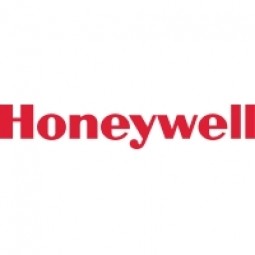公司规模
Large Corporate
地区
- America
国家
- United States
产品
- Datamax-O'Neil A4212 Printers
- Datamax-O'Neil A-Class Print Engines
技术栈
- Print-Apply Systems
- Broadcast Print System
实施规模
- Enterprise-wide Deployment
影响指标
- Cost Savings
- Customer Satisfaction
- Productivity Improvements
技术
- 功能应用 - 产品数据管理系统
- 功能应用 - 远程监控系统
适用行业
- 消费品
- 零售
适用功能
- 产品研发
- 质量保证
用例
- 库存管理
- 资产跟踪
服务
- 系统集成
- 硬件设计与工程服务
关于客户
Wilsonart is a leading manufacturer of decorative laminate and acrylic solid surfaces, catering to the home improvement industry. The company produces a wide variety of sample chips in different colors and materials, which are distributed to home improvement centers for consumers to make informed decisions about their kitchen and bath surfaces. With a dedicated full-time production line, Wilsonart runs its sample chip line virtually non-stop to meet the high demand for these samples. The company has a long-standing relationship with DatamaxO'Neil printers, which have been used for over a decade to apply identification labels to the sample chips.
挑战
Wilsonart, a manufacturer of decorative laminate and acrylic solid surfaces, faced a significant challenge in keeping up with the increasing demand for sample chips at home improvement centers. The company needed to modernize its sample chip production line to minimize label waste during changeovers and reduce the total cost of ownership. The existing system, which had been in place for over a decade, relied on DatamaxO'Neil printers, but it required an upgrade to meet the growing demand and improve efficiency.
解决方案
To address the challenge, Wilsonart partnered with Code-in-Motion, an Irvine, California-based company that had designed their original sample labeling solution in the 1990s. Code-in-Motion developed an advanced print-apply system using six Datamax-O'Neil A4212 printers. These printers are specifically designed for high-performance print and apply applications, making them ideal for Wilsonart's sample chip line. The new system features innovative design elements such as stainless steel hardware components, a modular electronics card cage, a field-installable thermal transfer ribbon assembly, a remote control panel, and a full graphics display. The system also includes a unique vacuum-cup pick-and-place mechanism that minimizes label waste during product changeovers and ensures accurate label application.
运营影响
数量效益

Case Study missing?
Start adding your own!
Register with your work email and create a new case study profile for your business.
相关案例.
.png)
Case Study
Improving Vending Machine Profitability with the Internet of Things (IoT)
The vending industry is undergoing a sea change, taking advantage of new technologies to go beyond just delivering snacks to creating a new retail location. Intelligent vending machines can be found in many public locations as well as company facilities, selling different types of goods and services, including even computer accessories, gold bars, tickets, and office supplies. With increasing sophistication, they may also provide time- and location-based data pertaining to sales, inventory, and customer preferences. But at the end of the day, vending machine operators know greater profitability is driven by higher sales and lower operating costs.

Case Study
Improving Production Line Efficiency with Ethernet Micro RTU Controller
Moxa was asked to provide a connectivity solution for one of the world's leading cosmetics companies. This multinational corporation, with retail presence in 130 countries, 23 global braches, and over 66,000 employees, sought to improve the efficiency of their production process by migrating from manual monitoring to an automatic productivity monitoring system. The production line was being monitored by ABB Real-TPI, a factory information system that offers data collection and analysis to improve plant efficiency. Due to software limitations, the customer needed an OPC server and a corresponding I/O solution to collect data from additional sensor devices for the Real-TPI system. The goal is to enable the factory information system to more thoroughly collect data from every corner of the production line. This will improve its ability to measure Overall Equipment Effectiveness (OEE) and translate into increased production efficiencies. System Requirements • Instant status updates while still consuming minimal bandwidth to relieve strain on limited factory networks • Interoperable with ABB Real-TPI • Small form factor appropriate for deployment where space is scarce • Remote software management and configuration to simplify operations

Case Study
Digital Retail Security Solutions
Sennco wanted to help its retail customers increase sales and profits by developing an innovative alarm system as opposed to conventional connected alarms that are permanently tethered to display products. These traditional security systems were cumbersome and intrusive to the customer shopping experience. Additionally, they provided no useful data or analytics.

Case Study
How Sirqul’s IoT Platform is Crafting Carrefour’s New In-Store Experiences
Carrefour Taiwan’s goal is to be completely digital by end of 2018. Out-dated manual methods for analysis and assumptions limited Carrefour’s ability to change the customer experience and were void of real-time decision-making capabilities. Rather than relying solely on sales data, assumptions, and disparate systems, Carrefour Taiwan’s CEO led an initiative to find a connected IoT solution that could give the team the ability to make real-time changes and more informed decisions. Prior to implementing, Carrefour struggled to address their conversion rates and did not have the proper insights into the customer decision-making process nor how to make an immediate impact without losing customer confidence.









